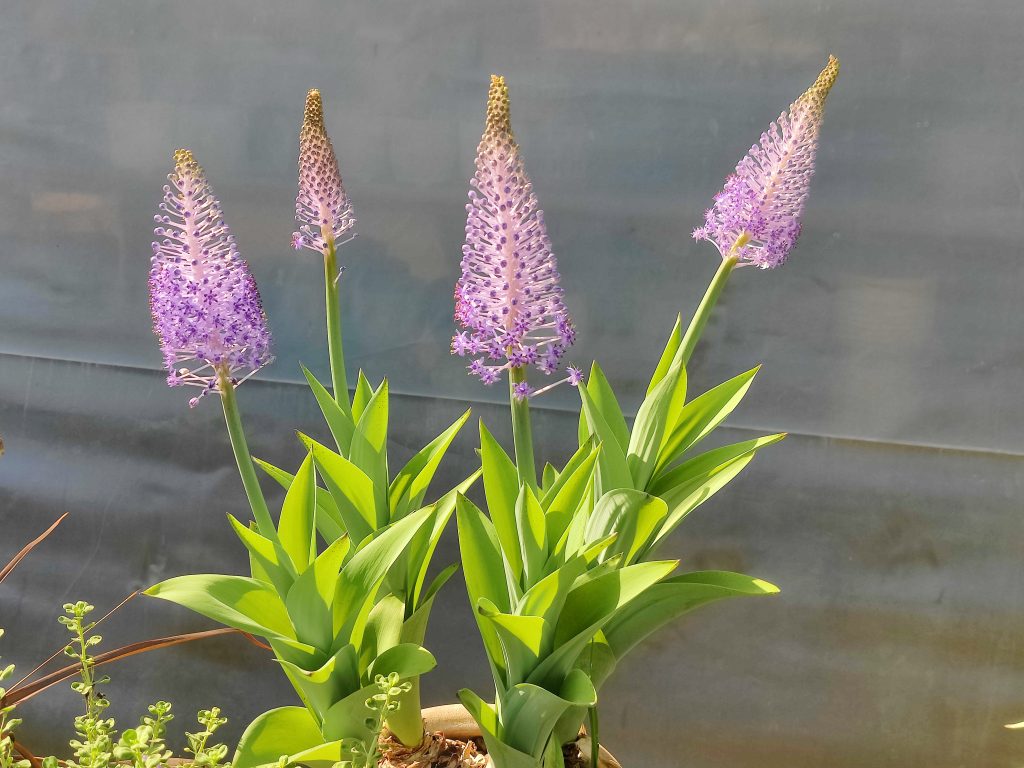
Scilla maderensis
Family: Asparagaceae | Origin: Madeira Island
During the months of September-December, masses of tiny squills of the genus Scilla automnalis bloom throughout the country, appearing in the fall before and after the first rains; only the keen-eyed and those willing to bend down will notice their beautiful flowers…
Their big brother, Scilla hyacinthoides, which is also common throughout the country, will soon begin to sprout and develop large leaf rosettes during the winter.
When spring comes in March and April, the tall flowering stems, sometimes reaching a meter or more in height, will rise and be covered with an abundance of purple flowers.
This is an adaptable plant that grows well in sun and shade, with or without summer watering, and reproduces by division and seeds, forming large, flowering clumps over the years. Also suitable in containers, under trees and almost anywhere in the garden and it is highly recommended to plant it now before it wakes up.

One of their rarest relatives comes to us from the northern cliffs of the island of Madeira, located about 500 km west of Morocco in the Atlantic Ocean at the same latitude as Israel.
This region enjoys an almost eternal spring, temperate temperatures and some rainfall throughout the year with a significant reduction in rainfall during the summer.
Scilla maderensis grows large bulbs covered in purple skin. In the fall, when the rains increase, a new rosette of leaves develops and at the same time the flowering spikes quickly emerge.
Each conical inflorescence consists of hundreds of purple star-shaped flowers and the appearance is heavenly and spectacular. After the short flowering, dark, shiny green fruits form on the flowering stems and remain there for several months until they ripen. The funnel-shaped leaf rosettes are also special and beautiful.
The plant prefers to grow in partial shade and is very successful in small pots and in the ground with some backup irrigation when rains are scarce. It can be either dried completely or watered regularly through summer.
This great plant is resistant to temperatures close to zero, but should be protected from strong frosts.
לקריאה על בן-חצב מדיירי בעברית לחצו כאן

